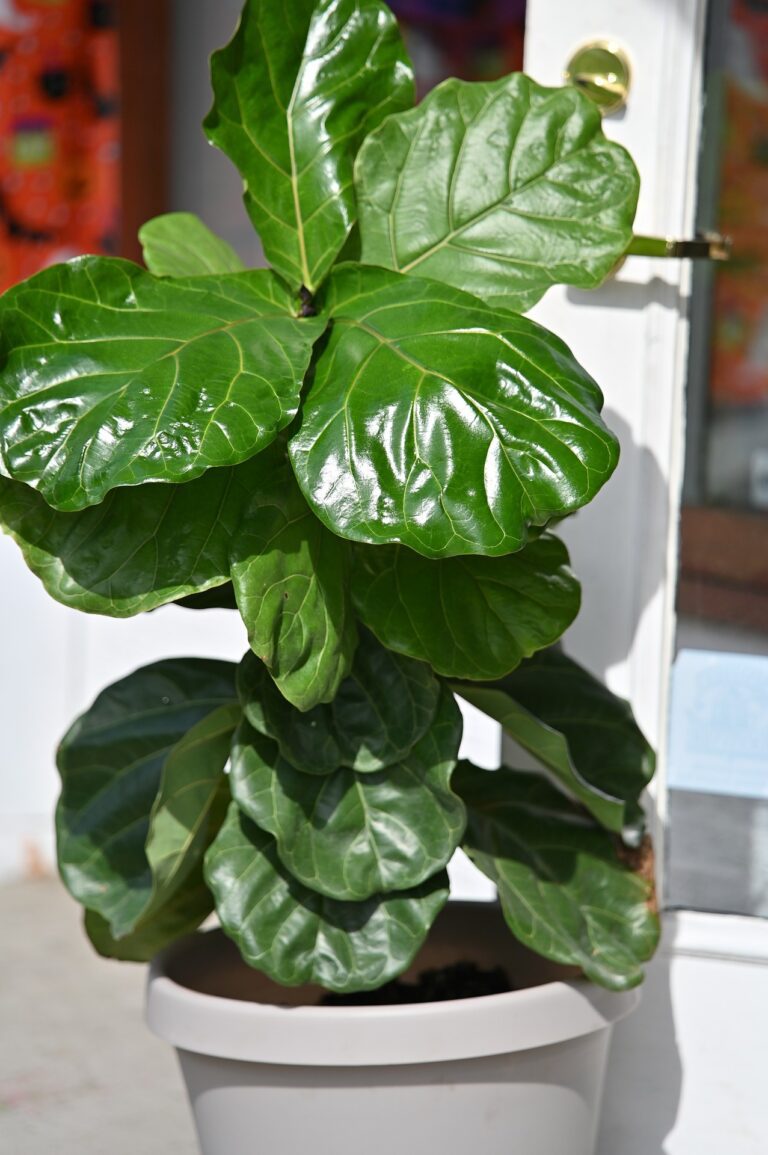Caring for the Song of India Plant: Tips and Tricks
The Song of India plant (Latin name Dracaena Reflexa or the retired Pleomele reflexa) an upright tree or evergreen shrub, has yellow stripes on short, narrow pointed leaves. This slow growing, versatile plant decorates many homes and offers shade for smaller garden plants. It needs a minimum of water, and diffused sunlight to survive, which explains why you find in so many offices.
Although it’s an often used as a decorative indoor plant, you can also plant it in your backyard, where it can reach heights of up to 20 feet. The Dracaena Reflexa, native to Madagascar and Mauritius, thrives in warm climates.
Song of India Plant Facts
The lanceolate leaves taper to a point like a lance and grow in tight whorls. Upon closer, inspection, the arched-over leaves look like they’ve been waxed. These glossy, striped leaves can shoot up to one foot long and a few inches wide, so keep them pruned to avoid run-ins with errant leaves as you’re walking down the hall or in your garden.
The Song of India’s small, white sterile flowers are barely noticeable. Lower leaves eventually die off and reveal thin, silver-brown stems.
Commonly used on pedestal stands in homes and offices, the Song of India provides a contrast
to artwork, and many interior decorators use it as a design piece, along with furniture.
It’s adaptable to most indoor lighting conditions from bright lights of a reception room with the dim lights of a home theater. If you want the best for your plant, though, give it lots of light.
The Song of India is versatile and handles both indoor and outdoor growing well.
The Dracaena Reflexa can be used as screen barrier or hedge in your garden. It breaks up larger ornamental gardens with lots of flowers with its arched, glossy leaves.
Along with a few other Dracaena plants, the Song of India is included on the NASA list of top air-purifying plants.
The Tropical Plant Technician offers a few tips on “Caring for Dracaena reflexa ‘Song of India'” in this video from the Larry Scott YouTube Video Channel.
Planting and Caring for the Song of India
The Song of India is a great addition to large gardens, reaching a height of 8 to 20 feet tall. According to the University of Florida IFS Extension, the Song of India plant can survive in near-drought conditions. If you’re too busy to water plants, this one will survive. It’s sensitive to salt spray and coastal waters, so plant in an interior garden if you leave near the ocean.
Like its Dracaena relatives (the Madagascar Dragon Tree plant, Lucky Bamboo plant, etc.) , these towering plants needs high humidity to stay healthy and should be raised in an ideal temperature between 65 and 85 degrees. If exposed to temperatures below 50 degrees for long periods, its leaves wilt and the plant may die. (source)
Boost humidity by putting your plant on a tray of pebbles with warm water underneath, or use a small humidifier.
Grow Song of India in mildly acidic soil with a pH of 6.1 to 6.5. Make sure top soil is 50% dry before watering. The soil used for indoor and outdoor Dracaena Reflexa should be slightly moist at all times. The stems are a bit weak, so you may need to prop them up with string or wire.
If leaves turn yellow and droop, ensure you’re not over watering. Prune some of the damaged leaves. Remember, you can skip watering for a month in the winter, and the plant will be just fine.
Feed your plant liquid fertilizer monthly in the spring and summer at a quarter of recommended strength, or use the fertilizer diluted at 10/10/10.
Whether you decide to plant indoors or outdoors, make sure the Song of India in a spot where it can get indirect sunlight. Bright, constant sunlight scorches its’ leaves, but occasional bright sunshine shouldn’t be a problem.
The Song of India is easy to grow in any backyard. “Dracaena Reflexa – “Song of India” – A Great Tropical Foliage Plant You Should Know About” From the Eat Your Backyard YouTube video channel gives you a firsthand look at caring for this plant.
Propagating Song of India Plants
If you want new Song of India plants, you can’t buy a pack of seeds. You need to propagate new plants from woody or herbaceous cuttings from one of your grown plant. Luckily, the Song of India is easy to prune, and you can keep cuttings from burgeoning plants to grow new ones. For your outdoor garden, all you need to do is stick cuttings into the fertile soil if you want new plants in your gardens.
Prune off the bottom half of leaves Cut off about 11 or 12 inches in length from one of your leaves on a fully-grown plant, and push it into compost soil. Keep watering it and wait a few weeks. As the new plant sprouts, few leaves may drop off but, it will eventually show robust growth.
Repotting Song of India Plants
If you buy a Dracaena reflexa from the supermarket, repot it in loose soil. Supermarket plants aren’t usually well-cared for, so be prepared to get your hands dirty when you get home. Make sure pots have excellent drainage to prevent standing water, which can damage the plant.
A full-size Song of India plant can be repotted every two or three years if the developing roots run out of space in the container and try to escape through the lip of the pot or drainage holes. A root bound or pot bound Song of India may have wilted or browning leaves. This plant isn’t as sensitive to being root bound as many others, and smaller Song of Indias can thrive even if they’re slightly pot bound.
Other Song of India Care Requirements
Scales or mealybugs may infest indoor Song of India plants. Pick off scales off with a gloved hand or prune infested leaves.
Keep your dog or cat away, because like other Dracaena plants they’re poisonous to pets. It’s a good idea to plant the Song of India in the back part of your garden, where small children and animals can’t get to it.
Read also our article about Panda plant.
Photo by Troy Mckaskle licensed under CC BY-SA 2.0



Thanx for the heads ip information, i would like to do potato farming but i dont have a clue as to how to go about it but i believe if i keep intouch with ur site i will manage.
Am impressed